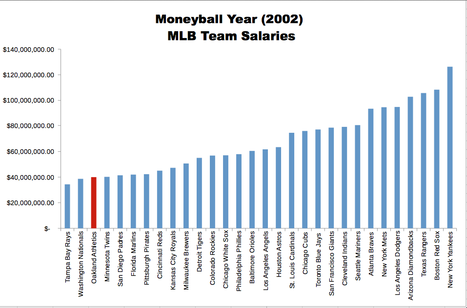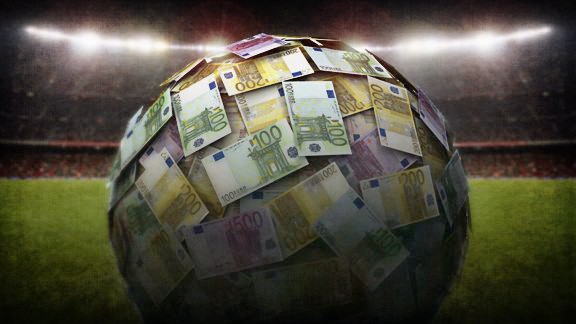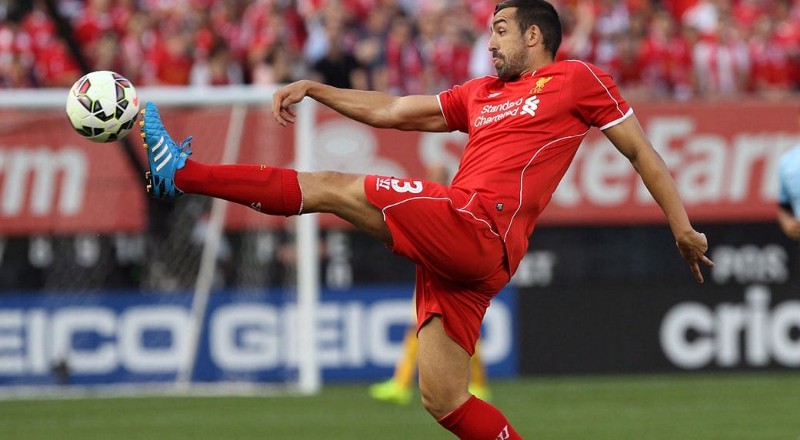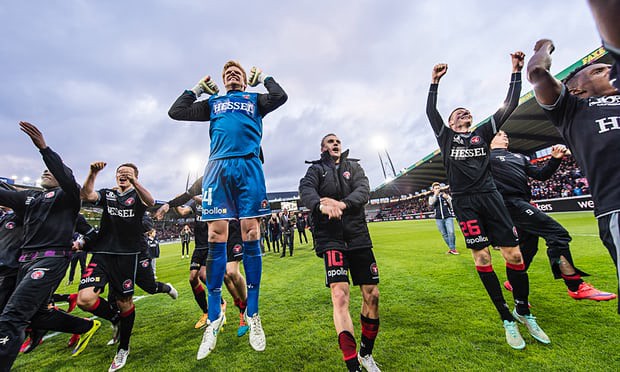The Football Revolution and Why It’s Almost Here
This World Cup season, the whole world, football fans or not, are abuzz about the ongoing tournament being held in Russia. (Ah yes, that football.) So why not learn a bit more about ‘The Beautiful Game’ to try and show off to your die-hard football friends and family members, eh?
Let’s start somewhere completely unrelated.
Brad Pitt.

Do I have your attention now?
Now, what does this annoyingly good-looking specimen have to do with football? I’ll get to that.
You may know him as the lead actor in some of those iconic movies you’ve seen, such as Fight Club, Inglourious Basterds, the Ocean’s trilogy, Se7en, Mr and Mrs. Smith, to name a few.
Or you may know him as the person who has been in relationships with Hollywood’s most famous actresses like Jennifer Aniston and Angelina Jolie. Whatever the means, chances are you’ve heard of him.
Speaking of chances, Brad Pitt has also acted in a lesser known 2011 film called Moneyball.

He plays Billy Beane, the General Manager of the Oakland Athletics’, a baseball team in the Major League Baseball in the USA. The story revolves around his role in reinventing the team using an experimental technique based on statistics, with the help of a Yale economics graduate, to help them win the league with a significantly lesser amount of money. The movie, nominated for an Oscar, is actually based on a book, written about the events which actually transpired during the 2002 season, during which (spoiler alert) the Oakland A’s defied all odds to win the league with a record breaking 20 game winning streak.

What did Billy Beane do? He threw the old methods of intuition and expertise in the trash and built a team from scratch purely using statistics for the 2002 season. He knew he didn’t have the budget that the bigger teams such as the Boston Red Sox ($108 million) and the New York Yankees ($125 million). In fact, they had the 3rd lowest budget for that season with just $39 million.

But they used that to their advantage and bought players that scouts had previously overlooked because of their physical quirks such as throwing the ball an unconventional way or having a weird batting stance, but in fact had excellent statistics. He trusted in the statistics despite opposition from almost everyone else managing the team.
And mind you, this was in 2002, before computers and technology was as prevalent as it is now. But he preserved, and he built a dream team to win the league, with minimal financial aid.
And this started a revolution in the sports world.
Soon, teams from all different sports began to adopt this “Moneyball” technique. It became a commonly used term within sporting professionals, referring to using statistics to revamp a team. And with advancements in technology, this began to be more and more of a trend, popping up all over the world in all different sports.
Currently, the leading field in statistical analytics has to be machine learning. Machine learning is a prerequisite to Artificial Intelligence, a term you’re sure to have heard of, thanks to Siri, Google Assistant and Cortana. Machine learning is basically defined as the subfield in computer science to give computers the ability to learn without being programmed explicitly, which is basically what Artificial Intelligence deals with.
So what do Siri and Cortana have to do with sports?
Right now, everything.
To give a few examples, the Kolkata Knight Riders, in the Indian Premier League which is a cricket tournament held in India annually, used the help of SAP Labs and an auction analytics tool to give insights on impact players to buy during the 2014 season, which they then went on to win.
Most teams in the National Football League (NFL) in the USA use machine learning algorithms to pick players during the drafts.
Predicting match outcomes using such algorithms is becoming a huge trend, with big players such as Microsoft getting into the act and becoming a frontrunner in predicting NBA and NFL matches.
But one sport almost seemingly untouched by this revolution is football (yes yes, soccer). The reason being that is a much more complicated sport with a larger number of variables, making it more and more difficult to implement the same tactics used in other sports.
Predicting football games using the complex data and getting successful outcomes has become a trend, with many using it to bet on games based on the results of various simulations. UK sports betting company Stratagem is using artificial intelligence (deep neural networks, to be precise) to analyze patterns found in football matches, use them to predict outcomes of matches using the proprietary data, and possibly, earn a bit more than usual.

For such a money driven sport, it’s a surprise that statistical analysis hasn’t yet been implemented on a large scale.
Despite all the negative criticism of using a statistical intervention in football clubs, it is evident that the sport will soon be turning towards that direction and there are clear signs showcasing exactly that. There have been many attempts in the past, but none effective enough to make a big enough impact.
Immediately after the release of the movie, John W. Henry, who had implemented this “Moneyball” technique in the Boston Red Sox as its owner (the beginning of which are showcased at the end of the movie) and had a huge success, looked to do that with his investment in the English Premier League, Liverpool FC. As owner of Liverpool FC, he had hopes of making Liverpool the Boston Red Sox of the Premier League. He even tried to bring on the legendary Billy Beane himself as an advisor.

He brought in Sabermetrics analysts at Anfield, Liverpool’s home, scrutinising every aspect of the team’s game, from current player performances to tactical moves. Liverpool immediately signed on Jose Enrique, a left full-back, only for the reason that he had a high pass completion rate and that he was one of the best players in the league to break into the attacking third of the field. But this soon turned into a highly expensive campaign and after about 18 unsuccessful months, this system was called off
Even smaller teams in the Premier League, like Stoke City FC, who had been trying to implement similar tactics, gave in and the method became a distant reality for the game of football and people soon forgot about such methods.

Enter FC Midtjylland.
Can’t even pronounce it, can you? (It’s Mid-Jee-Lund)
A small Danish club, on the brink of relegation to lower leagues, was bought and revamped by Matthew Benham. Matthew Benham is not your typical football club owner. He made himself a fortune by using mathematical models to bet on football matches, and eventually bought him childhood team, Brentford, a lowly League One team, languishing in the lower leagues of English Football. A strong believer in the “Moneyball” technique, he revamped the entire team based on his pure belief in statistics, very similar to Billy Beane. Brentford were promoted to the Championship that season and very nearly clinched promotion into the Premier League the very next season.
Matthew Benham then went on to buy FC Midtjylland, a team barely even heard of. He used the same techniques there, and had an even greater success. In a fairytale story (very similar to the Oakland A’s of 2002), within a matter of a season, FC Midtjylland went on to win the Danish Superliga title, their very first major trophy. The match which sealed the deal, a 2–0 win against FC Copenhagen, is said to have been the one of the best matches ever played tactically and was a true testament to the statistical revolution they underwent. Their story went viral when they were matched up with Premier League team Southampton FC, who were strong contenders, in the Europa League of 2015, and beat them convincingly.

At Brentford, Benham’s team identified underrated players and transformed them into superstars for the team. As an example, they made a staggering profit on striker Andre Grey, who was signed for just £500,000, and was eventually sold for a massive £9,000,000. Andre Grey was identified by Benham’s statistical team.
Rasmus Ankersen, who works alongside Benham at both clubs, said: “I met Matthew a few years ago. At the time, Brentford were third in League One and there were a couple of games to go. I said to him, ‘What are the chances of getting promoted?’ When you ask that question you expect an emotional ‘yes’ or ‘no’ from a football owner. But he just said rationally, ‘At the moment, there’s a 42.3 per cent chance we will get promoted’. I knew then he was a guy who was thinking very differently about football than I have ever experienced before.”
Matthew Benham has been hailed as the Billy Beane of modern day football.

Next, a team you’ve probably heard of.
Leicester City FC.
I’m disappointed if you can’t pronounce this one.
Surprise winners of the Premier League title in the 2015/16 season who didn’t use the exact same tactics as Matthew Benham but they did have possibly the greatest underdog story of all time. At 5000–1 odds of winning the Premier League at the start of the season, they pulled off one of the greatest upsets in football history.
Their best players were bought at terribly low prices and were previously unheard of. N’Golo Kante, who was playing for a team called Caen in France, was bought for a meagre £5.8 million. Later, he was sold to Chelsea FC for a whopping £30 million. The team’s top two scorers, Jaime Vardy and Riyad Mahrez were bought for £1 million from a non league team in 2012 and £400,000 from a French Ligue 2 team in 2014 respectively. Now, Vardy has a £20 million transfer value and Mahrez with £15 million.

Even though it doesn’t follow the same statistical beliefs that Brentford and FC Midtjylland used, it is a very similar approach and eventually, had an even more successful result. These are all small-time examples of how statistics and analytics can influence the game of football. But it has not been implemented on a large scale yet.
Then the question must arise; if small teams with a lesser amount of money can get significant gains, why don’t the bigger teams with larger amounts of money do the same and get an even bigger profit?
Because they have a lot more to lose. By injecting a lot of money, the owners of the big teams are afraid of using experimental methods which don’t have a guaranteed success rate.
Recently, private equity firm Vista invested a huge amount into STATS, a leading sports data and technology company. STATS is at the forefront of football revolution, providing newer methods to efficiently and accurately track player performance as well as make predictions and suggest tactics which could help teams get an edge over one another. They recently used Spatiotemporal data to track teams in the Premier League, and published a paper on the same, which has reached critical acclaim in the footballing world.

With more and more advancements in technology itself, it’s a given that there has been a major improvement in the field of football analytics and there have been substantial results to show for it. Perhaps it is time for the teams, big and small, to adapt with the times and give in to this wave of reform. It is without a doubt that the way football itself is viewed will undergo a drastic shift over the next decade.
And who knows what the future holds? Maybe Brad Pitt will be playing the role of a young football manager on the big screen soon enough.

Or maybe not.